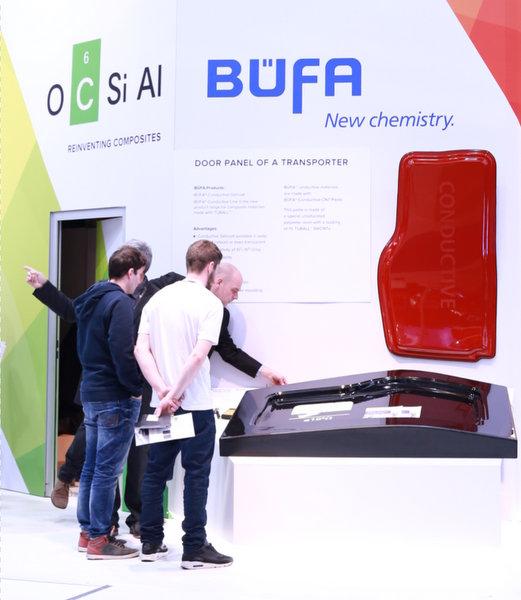“Application of carbon black or graphite as a conductive additive negatively affects the original colour, resulting in a black surface, or dark grey at best. That strong correlation has resulted in the stereotype about conductivity always being associated with a black colour. However, switching to TUBALL nanotubes, produced by OCSiAl, has enabled us to overcome drawback,” said Elmar Greiff, Project Leader Nanocomposites, BÜFA Composite Systems. “We now make conductive gelcoats with previously unachievable colour shades, including almost white. For instance, we produce translucent conductive gelcoats with a surface resistivity of just 10^3 Ω /sq .”

Thanks to their extraordinary properties, even ultra-low loadings of TUBALL single wall carbon nanotubes are enough to achieve the required permanent and stable conductivity. This core advantage leads directly to a number of additional gelcoat performance benefits, such as a smooth and homogeneous surface, without the negative influence on weathering that is usually associated with carbon black or graphite. Furthermore, the nanotubes are supplied in the form of a paste that allows customers to handle them with standard application methods without any additional equipment. “We acknowledge the high and rapidly growing market demand for gelcoats containing nanotubes. A number of end products that use our gelcoats have already successfully hit the market,” added Mr Greiff.
There are some particular applications where nanotube-based gelcoats can almost completely replace standard gelcoats, for example in tooling gelcoats. Due to the triboelectric effect, a static discharge can occur when a GRP part is demoulded. Even a minor flash can cause an explosion at a facility if there are any flammable materials nearby. BÜFA Composite Systems has made a breakthrough in industrial safety protection by developing a tooling gelcoat with TUBALL nanotubes. Its surface resistivity of 10^6 Ω/sq is low enough to prevent any accumulation of electric charge. Another huge advantage of such anti-static coatings is that they stop the surface from attracting the dust that would otherwise result in shorter working cycles and longer mould preparation times.
With their high performance and protective characteristics, conductive gelcoats with TUBALL single wall carbon nanotubes are storming particular markets. Pipes and tanks for chemicals, ventilation systems, printing rollers, control boxes for electronics, floor coatings at industrial production plants, tooling gelcoats and resins for composites, to name just a few. In comparison with traditional coatings, they demonstrate much better chemical resistance, with no reactivity drift, and their low contamination makes for an exceptionally clean production process.
OCSiAl and BÜFA have been strong partners since 2015 in developing nanoaugmented composite materials. Both companies are extremely satisfied about the cooperative partnership that has fostered benefits for both sides. BÜFA offers a wide spectrum of conductive gelcoats, resins and concentrates, including customer-specific, individual solutions in unsaturated polyester and epoxy resins.
